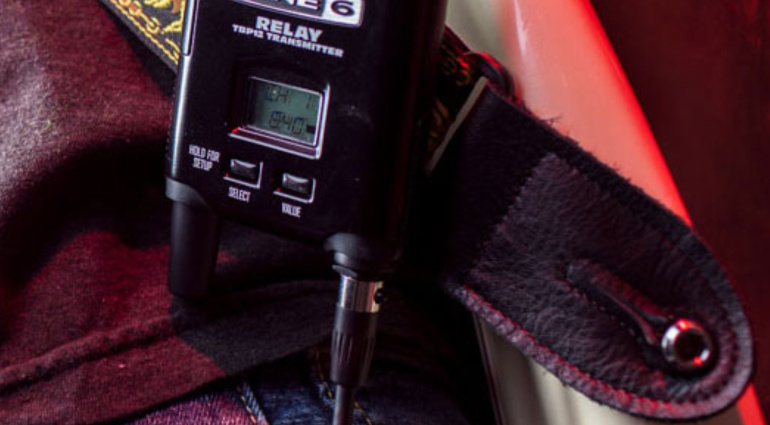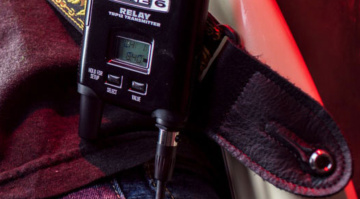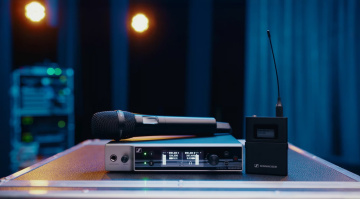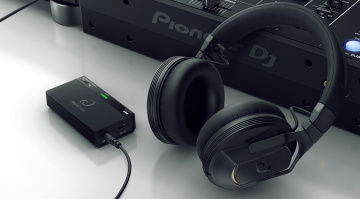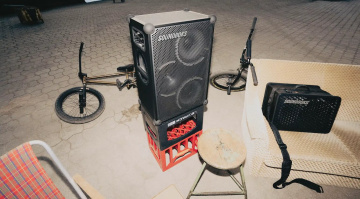The 7 Best Wireless Guitar Systems: No More Tangled Cables!
The best systems for home use, occasional gigging, and tour life!
It used to be that wireless systems for guitars were only used by pros and in big productions. These days, you can get affordable solutions under 100 euros that work fine at home an in the rehearsal room! Why get one? Above all, freedom of movement is a major advantage. Let’s take a look at the best wireless guitar systems for beginners and pros!
Our Suggestions for Best Wireless Guitar Systems:
Best Wireless Guitar Systems: Pros and Cons
Let’s start with the pros and cons of wireless systems for electric guitars (and electric basses, of course!). The biggest advantage: no wires. No more untangling cables, no more accidentally unplugging your instrument and then being met with deafening silence during a gig. What was previously previously only available in higher price ranges with minimal noise and latency is now available with good quality entry-level models.
One of the biggest disadvantages of these systems is their dependence on batteries. Forgetting to recharge or replace them at the wrong moment can cause stage panic. Also, the growing use of wireless systems for string instruments, microphones, and in-ear monitoring also often leads to signal interference.
What to look for
The two most important parameters when researching the best wireless guitar system are the band or frequency range in which the system transmits and receives, and its battery life. However, the importance of each factor largely depends on what you need the system for.
If you almost always play at home, maybe once a week in the rehearsal room, and you maybe play three shows per year, entry-level solutions are perfectly adequate as the best wireless guitar system. For intermediate solutions, the size of your band and, consequently, the number of string instruments that require a wireless system play a role. The more frequent the gigs and the larger the stages, the higher the price and quality you should aim for.
UHF vs. 2,4 GHz vs. 5,8 GHz
As a general rule, the lower the frequency band, the greater the range, but the lower the audio quality.
- UHF: Models that transmit in the ultra-high frequency (UHF) range between 300 hertz and 1 GHz are mainly used in professional applications. Because on big stages with distances of 20-30 meters or more, many high-frequency gigahertz models may run out of steam. On the other hand, problems can quickly arise when touring internationally. This is because many countries have their own laws when it comes to allocating UHF ranges, and some of these bands are reserved for mobile communications, radio, or television and are not allowed to be used by wireless systems. Try to obtain the necessary information before making a purchase. Some users also report that the higher compression of the guitar signal in UHF models can slightly impair the signal’s audio quality.
- 2.4 gigahertz: The advantage of this frequency band is that it is license-free worldwide and can therefore be used by any device. The disadvantage: Bluetooth and Wi-Fi also frequently transmit on 2.4 GHz. If there are a few Wi-Fi routers distributed across the stage, which is not uncommon these days, and the audience is close to the stage with their dozens (hundreds, thousands) of Bluetooth-enabled smartphones, dropouts can occur. However, those who mainly play in rehearsal rooms and on small stages should hardly encounter any problems.
- 5.8 gigahertz: Short range, hardly any interference, high audio quality, low latency. This sums up the highest frequency band, which has only recently been approved for wireless systems for guitars. One disadvantage of many, especially inexpensive, wireless systems for electric guitars in the high-frequency range is that, due to their design, they often cannot be used with guitars with active pickups.
Battery Life, Latency, and Size
Let’s look at three additional things to consider about the best wireless guitars systems. The battery life of each system, especially the transmitter, is an important factor. A wireless system will stop working immediately once the battery is depleted. And how annoying would it be not to be able to play the encore because the transmitter is dead?
A system’s latency comes into play with digital wireless systems. This refers to the delay between the moment you play the guitar and the signal reaches the pedals or amp. Most manufacturers specify a value for this. Anything below 5 ms is practically imperceptible.
It is also important to consider the size of a system’s transmitter in relation to how much you move around. The bulkier the transmitter and the closer the signal output is to the side of the body, the easier it is to accidentally remove the small device.
Harley Benton AirBorne 2.4 and 5.8 GHz
It comes as no surprise that Harley Benton is once again the entry-level solution of choice when it comes to the best wireless guitar systems. The quality offered by Thomann’s brand, and especially at such affordable prices, makes it easier for ambitious guitarists to get started. HB offers one transmitter/receiver model for 2.4 GHz and one for 5.8 GHz.
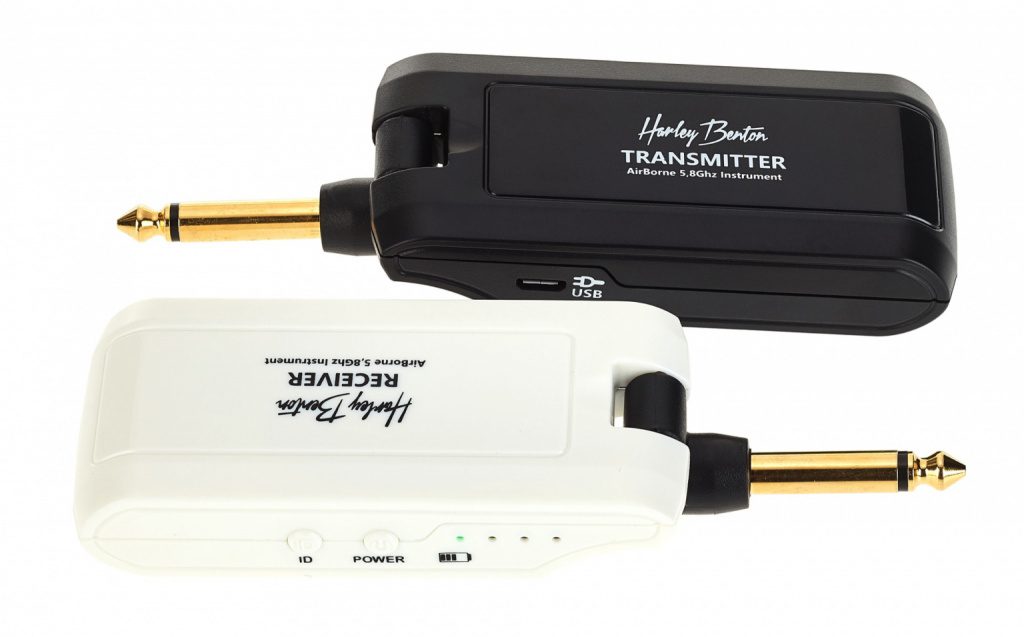
The 2.4 model comes with a 500 mAh lithium-ion battery (up to 6 hours of runtime), a range of up to 30 meters, and a latency of less than 5 ms. The smaller model for 5.8 GHz has a slightly smaller battery (up to 4.5 hours) and slightly higher latency (up to 5.6 ms), but at $48 / £42 / €49, it is also slightly cheaper at Thomann* than the 2.4 GHz model for $68 / £59 / €69*.
XVive A 58
The Xvive A 58 Guitar Wireless System packs a truly impressive amount of features for the price: 5.8 GHz, six channels, less than 5 ms latency, 110 dB dynamic range, up to five hours of battery life, 24-bit/48 kHz converter, 30-meter range.
Unlike the Harley Benton models, the transmitter also works with guitars that have active pickups. It also has a built-in scanner that automatically searches for the best of the six channels after the initial connection. For $145 / £129 / €149, you get a digital solution that is very suitable for smaller stages and occasional gigs.
Fender Telepath
When Fender first introduced the Telepath Wireless System last year as an affordable entry-level solution, it came as a bit of a surprise. Until then, the guitar giant’s forays into the digital world, such as the Tone Master Pro floorboard system, was situated in the high-end range. But don’t let the low price fool you: Telepath has a lot to offer!

This 5.8 GHz system offers eight hours of battery life, up to 21 meters of range, and auto pairing. This means that once the transmitter and receiver are turned on, pairing happens fully automatic. This model can also be used with both passive and active pickups. Telepath costs $175 / £155 / €167 at Thomann*. However, there is currently (August 2025) a waiting time of approximately nine to twelve weeks.
Boss WL-20 (and WL-20L)
Pedal giant Boss also has quite the range of wireless guitar systems in their roster. Or rather, three solutions. In addition to their different colors, the WL-20 and WL-20L differ in the pickups they are designed for: the WL-20 is made for guitars passive pickups and the WL-20L for active pickups.
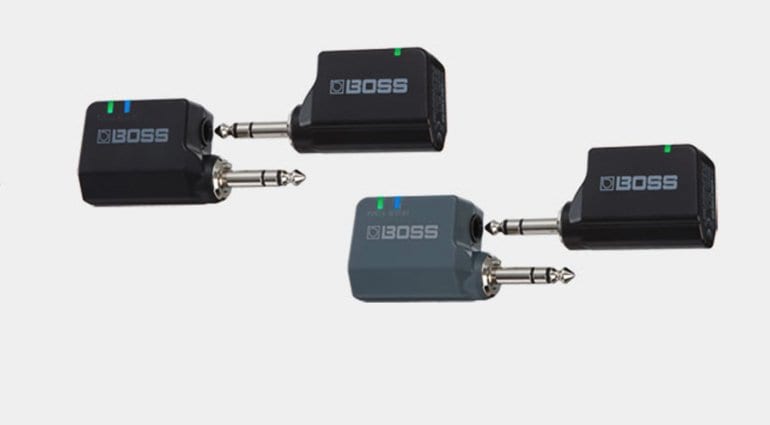
Otherwise, both offer the same specifications: 2.3 ms latency, 15 meters range, up to 12 hours of battery life. In addition, the WL-50 and WL-50 systems are two wireless solutions that allow the receiver to be integrated directly into the pedalboard. All models are available from Thomann*.
Line 6 Relay G10SII
If you frequently play smaller shows, this system could be for you. The Line 6 Relay G10II offers a range of 40 meters on the 2.4 GHz band, up to seven hours of battery life, and an additional DI output via XLR on the receiver.
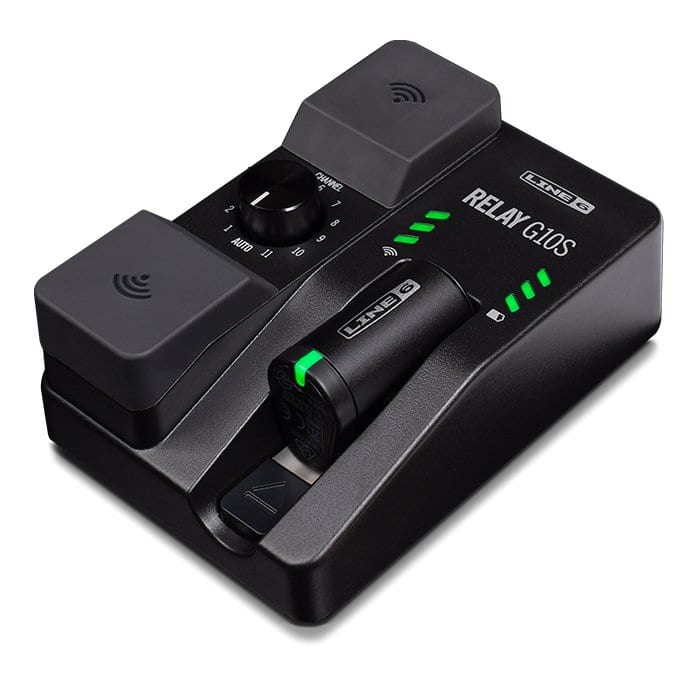
The transmitter can also be conveniently plugged into the receiver after the gig to recharge it for the next show. With a latency of 2.8 ms, the compact system offers excellent low latency that should be practically unnoticeable. This model costs $249 / £222 / €255 at Thomann*.
Shure GLXD16+
The Shure GLXD16+ transmits on both high-frequency bands, 2.4 GHz and 5.8 GHz. In addition, this practical solution also includes a tuner, saving you a pedal on your board.
With 12 hours of battery life and a range of up to 60 meters, the GLXD16+ is also suitable for larger stages. With a latency of 8 ms, this model is not the fastest available, but its dual-band operation ensures a particularly reliable and stable wireless connection even on crowded stages. The GLXD16+ currently goes for $549 / £489 / €565 at Thomann*.
Sennheiser ew 500 G4 Ci1 AW+ Band
How can you talk about UHF models and not even mention at least one? Most UHF models are almost exclusively found in professional applications. Remember: less prone to interference, greater range. The ew series from Sennheiser is the entry-level option for many when it comes to larger stages.

This model transmits in the UHF range 470–558 MHz, the AW+ band. It also offers a special sound check mode, endless presets for different channel setups, and a LAN connection that allows you to conveniently adjust the frequency and transmission settings using Sennheiser’s Wireless System Manager. The most expensive of the best wireless guitar systems costs $835 / £745 / €849 at Thomann*.
*Disclaimer: This article about the best wireless guitar systems contains affiliate links and/or widgets. When you buy a product via our affiliate partner, we receive a small commission that helps support what we do. Don’t worry, you pay the same price. Thanks for your support!

 4,3 / 5,0 |
4,3 / 5,0 | 